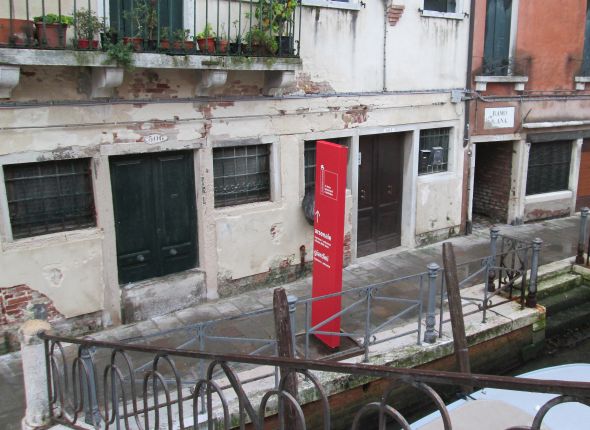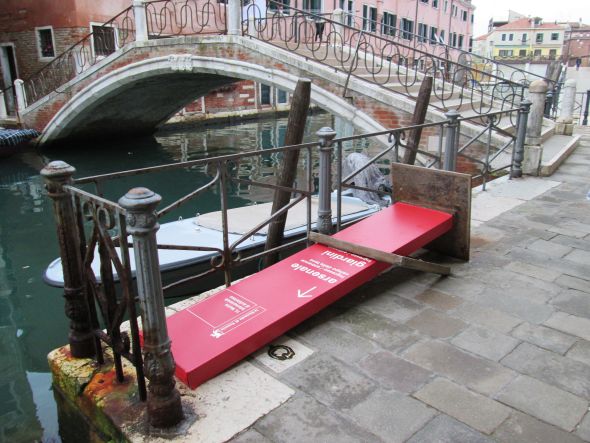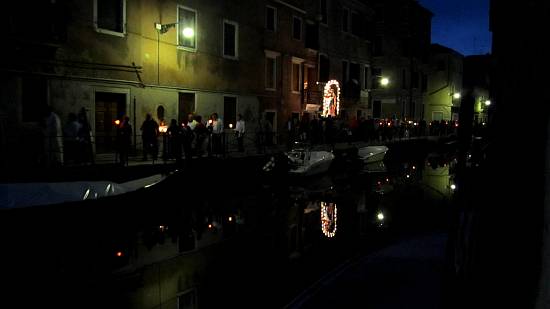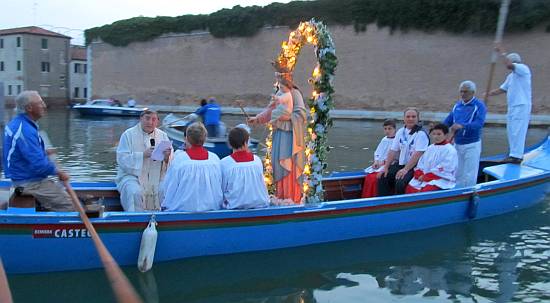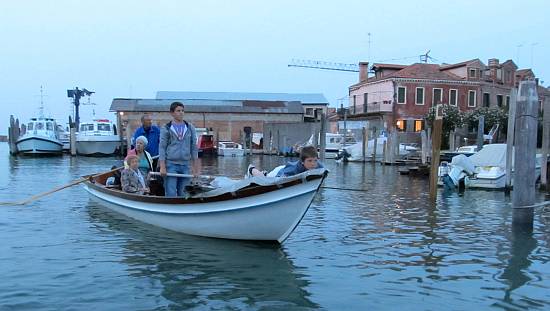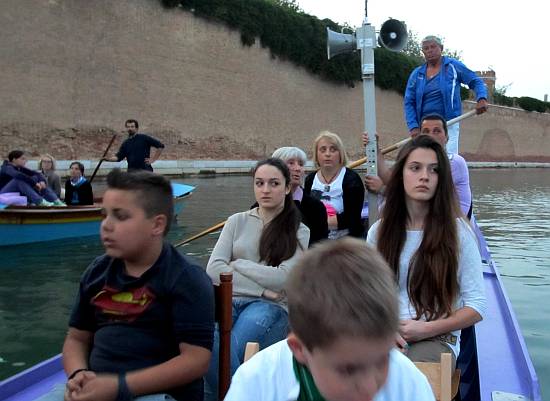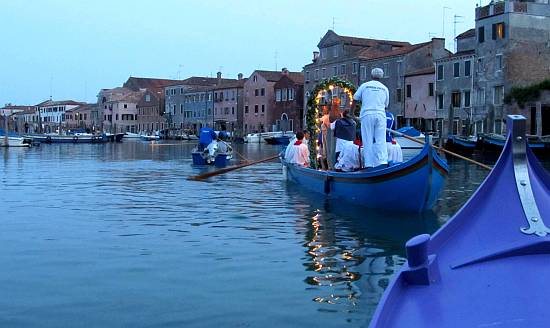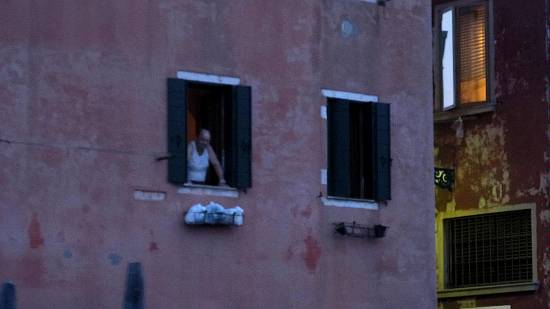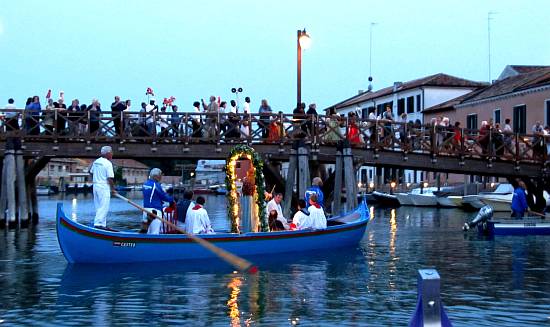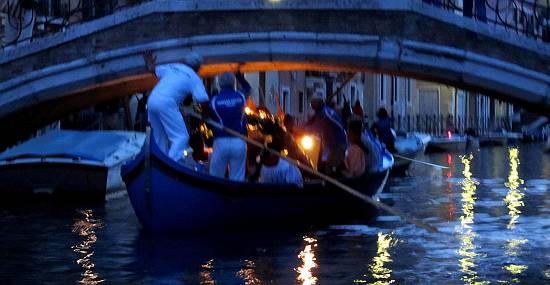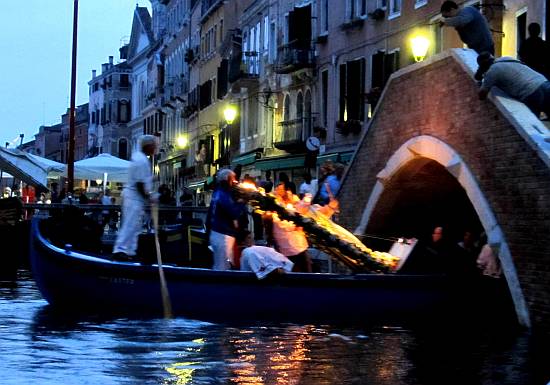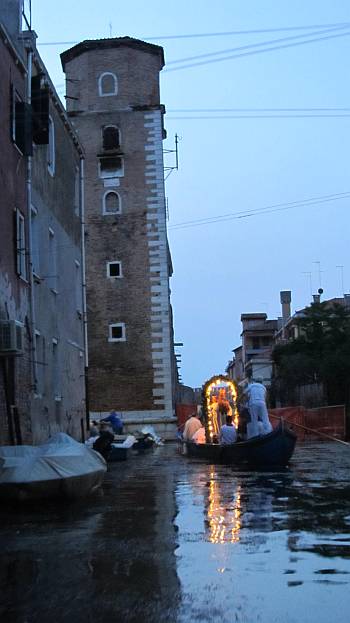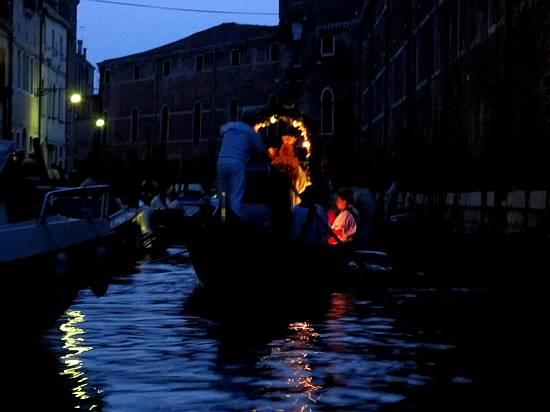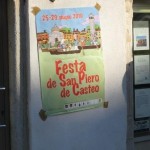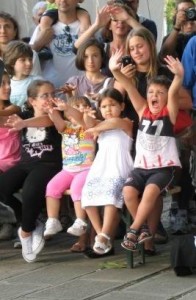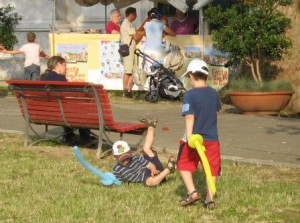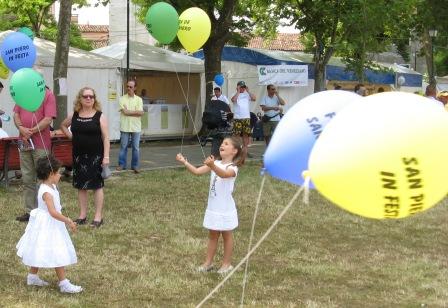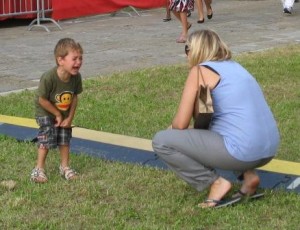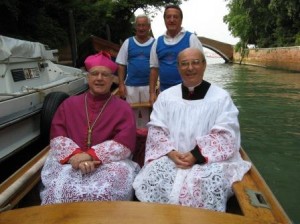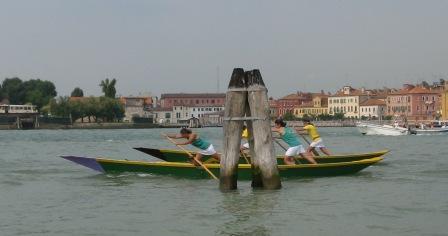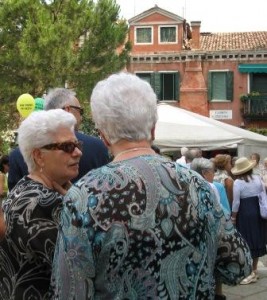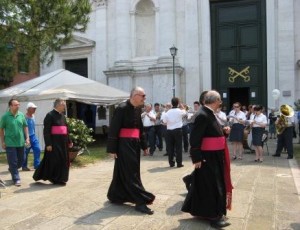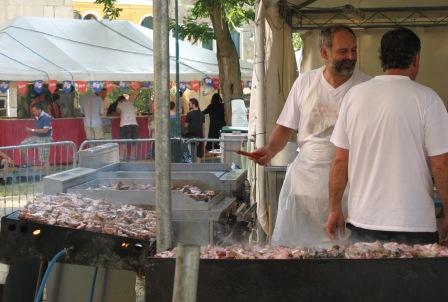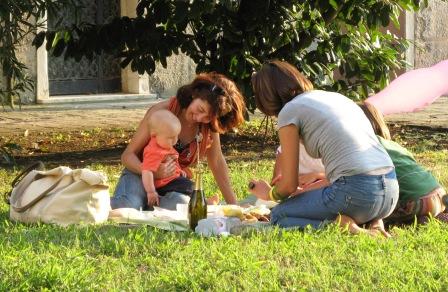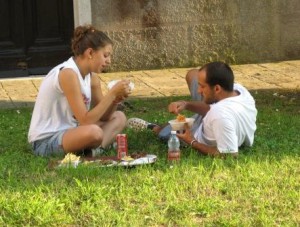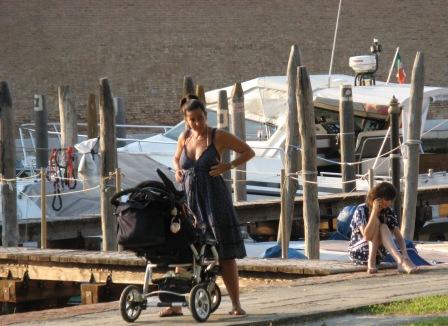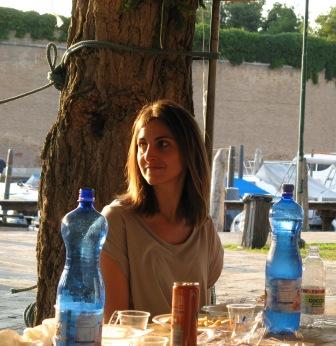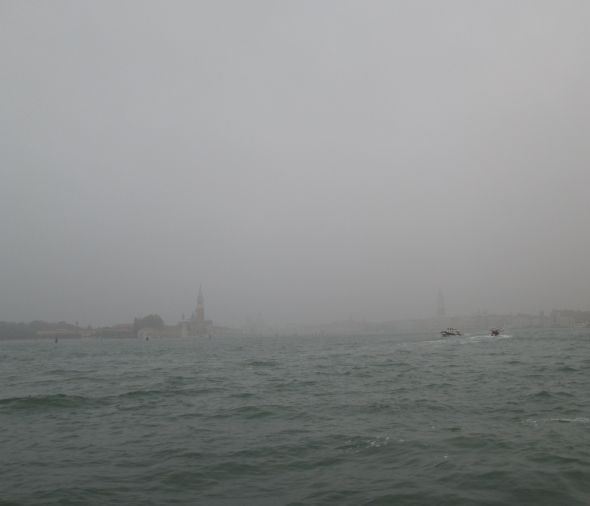

South Asia has the monsoon season; Lapland gets the white nights; Egypt endures the periodic simoom.
Here we have two separate months of heartless humidity, almost inevitably in October and April, two otherwise lovely months which in Venice reveal their dark, unregenerate side by smothering the city in a combination of cool temperatures and sodden, sticky air. Even when the sun shines, the dampness in the atmosphere is implacable. A gauzy mist softens the city’s silhouette, which is sheer photo-fodder, but its meaning in real life is quite otherwise. I haven’t given this phenomenon a title yet because I generally call it by short, rustic, Anglo-Saxon names.
The sheets on the bed remain repugnantly damp, the towels refuse to dry, potato chips no longer crunch. I am forced to wash the clothes even though I know they will not give up their moisture without a long, long fight. Five days after hanging them on the line, I’m still touching them and trying to convince myself that they’re dry. Of course they’re not.
Gone is that heavenly summer period in which you could hang out a huge soggy beach towel at 10:00 AM and by noon it would be crackling like desiccated firewood. Not yet arrived is the long winter season in which the radiators toast the underwear and bake the bedsheets. We have to accept this interval because, frankly, the longer we can put off turning on the heat, the better for everyone; the gas bill is an instrument of torture unknown to the Inquisition (deepest respect to the victims thereof), and after the recent unpleasantness between Ukraine and Russia, we know the gas bills will be higher yet this winter.
So much for the sense of touch around here these days. Clammy.
As for sounds, some are new, and many are old but more noticeable, or maybe I’m just becoming more sensitive.
Here are some highlights from the daily soundtrack:
From around midnight to 6:00 AM, a voluptuous silence wraps the city as far as I can hear. It is plush, it is profound. It’s so beautiful that I’m almost glad to wake up just to savor it.
At about 6:00, I hear a few random swipes of the ecological worker’s broom rasp across the paving stones. It must be exhausting work, because it lasts such a short time.
At 7:30 I begin to hear small children walking along the street just outside our bedroom window — you remember that only the depth of the wall itself separates my skin from theirs — on the way to school. Little mini-voices mingle with the bigger voices of whoever is accompanying the tykes up to via Garibaldi. If the day has started right, it’s a charming sound, though sometimes the voices make it clear that everybody needs to hit “reset” on their personal control panels.
Between 7:00 and 8:00 comes the thumping, clanking sound of the empty garbage cart bouncing down the 11 steps of the bridge just outside, guided by the ecological worker who sees no reason to fight gravity because he knows he’s going to face a serious battle with it on the return trip, his cart loaded beyond the brim.

At 8:00 sharp we get the morning hymn played five times from the carillon in the campanile of San Pietro, just over the way. The piece is performed in several keys — mainly the key of flat — and the melody has worn itself into my mind so deeply that if the bells were ever tuned I think it would actually disturb me, like those people who lived along Third Avenue in New York who were so used to hearing the elevated train roaring past their windows that the day the train was removed, the transit company switchboard was overwhelmed with calls from panicky people crying, “What’s that noise?” It was the silence.
Around 9:00 there is a brief but savage skirmish between what sounds like three dogs. This struggle to establish supremacy will be repeated, again briefly, toward 8:00 this evening.
At 2:00 the middle school in via Garibaldi lets out, releasing flocks of young adolescents in a homeward swarm. These children do not go silently, meditating on the poetry of Giosue’ Carducci or the whims of the isosceles triangle. Engage feet, open lungs. You can hear their chaotic shouts all the way down the street. Lino says, “They’ve opened the aviary.”
At 7:30 PM the carillon rings a another out-of-tune hymn, only two times. It’s longer than the morning music, so somebody decided twice was enough.
For a while, the evening noises separate and recombine in various ways (children, dogs, etc.). But peace is not yet at hand. It’s almost 11:00.
11:00 PM is the Hour of the Rolling Suitcase. Actually, by now almost every hour, and half-hour, belongs to the rolling suitcase, whose grumbling across the battered masegni has become a sound more common than shutters scraping open or banging shut.
What is it about 11:00? Where is this person (or persons) coming from? The flight arrivals list for Marco Polo airport gives options such as London, Vienna, or Barcelona, and Treviso Airport might be sending us passengers from Brindisi or Brussels, but whatever the starting point might have been, I marvel every night to hear that some intrepid soul’s day has been spent coming to Venice, and now he or she is finally here. Every. Night. Maybe I should set up a little refreshment stand by the bridge and offer some kind of energy drink, like at a marathon.
And speaking of 11:00, some time around then I hear a vivacious small group come down the street, walking from the direction of Campo Ruga toward however many homes they belong to. You could imagine a bunch of friends meeting every once in a while, and even going home later than 11:00 (which often happens in the summer). But what kind of a group always breaks up at 11:00? In high spirits? Coming from the direction of Campo Ruga? A mah-jongg club? Tango lessons? Choir practice? A renegade chapter of the Loyal Order of Moose? I cannot conceive of what could be going on that would require a group to attend every night, especially in this neighborhood. And yet, they pass, and happily. This, too, perplexes me. Happy every night? Where do I sign up?
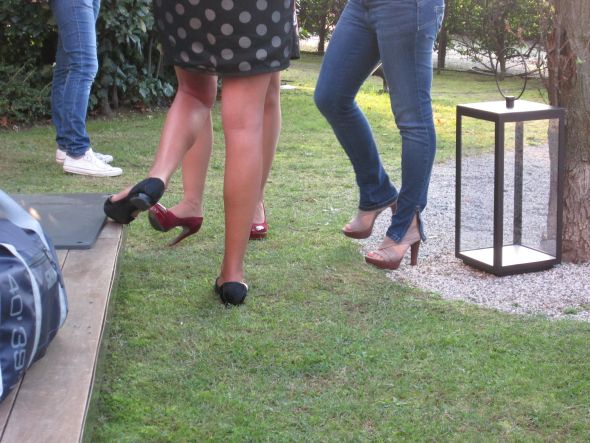
But wait. The day isn’t over yet. Now we come to midnight — or almost.
For the past week or so, just as the day has drifted toward midnight, and every normal noise has faded away, and every normal person has shut the front door behind him or her, we’ve heard a sudden heavy metallic CLONNNNNGGGG from the other side of the canal. No, we don’t ask for whom the bell is tolling, because it’s not a bell. It’s the red metal stele which indicates the direction of the Biennale ticket booths; a local consumer of controlled substances evidently cannot physically tolerate, philosophically accept, or rationally justify its verticality. It must be horizontalized, immediately. Maybe it’s some prehistoric variation of hydrophobia.
And in the morning, another person or persons stands it upright again, our own lonely little menhir unknown to archaeology.
Lino discovered the culprit one evening, and pointed him out to me the next day. But what I still don’t know is who puts the signpost upright again the next morning.
Maybe it’s Sisyphus.
